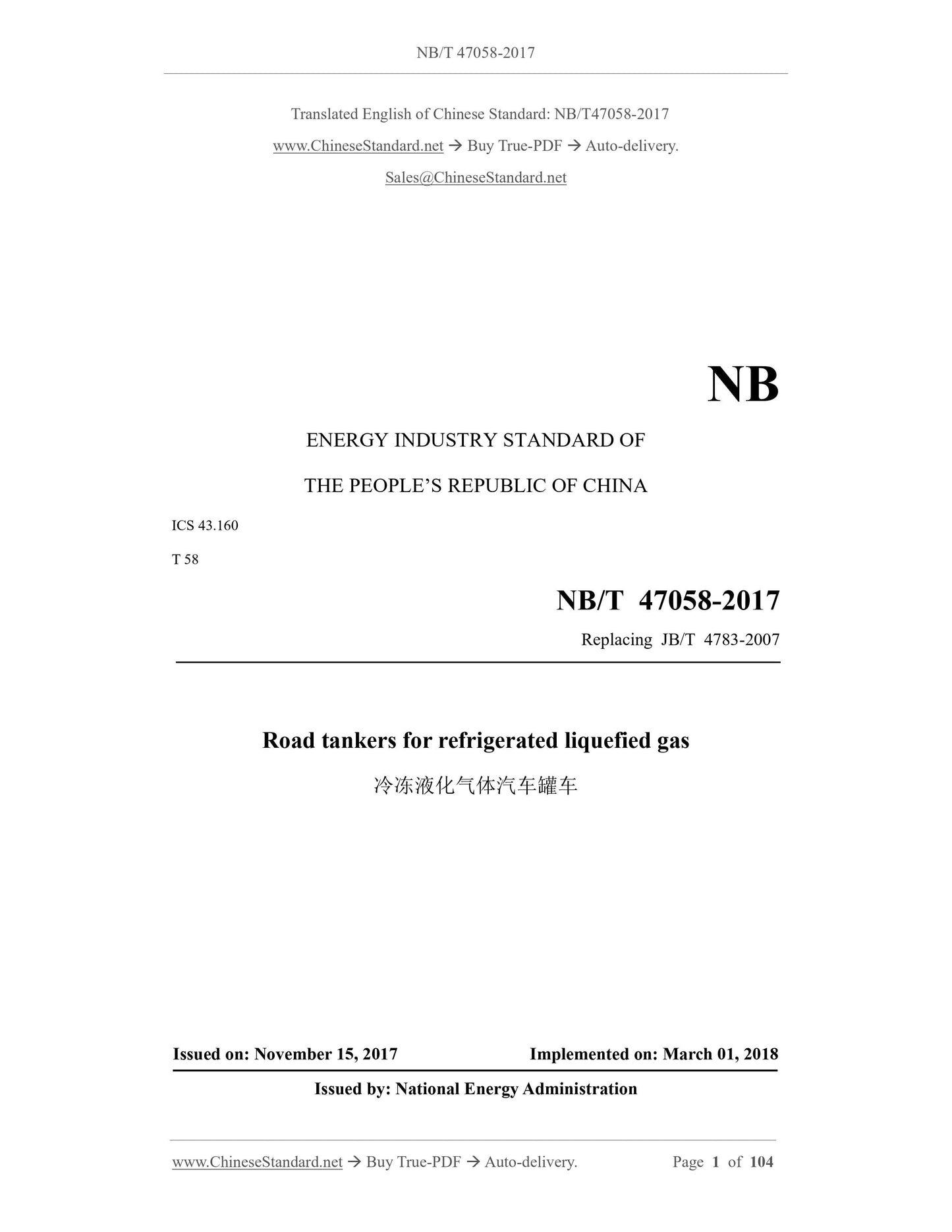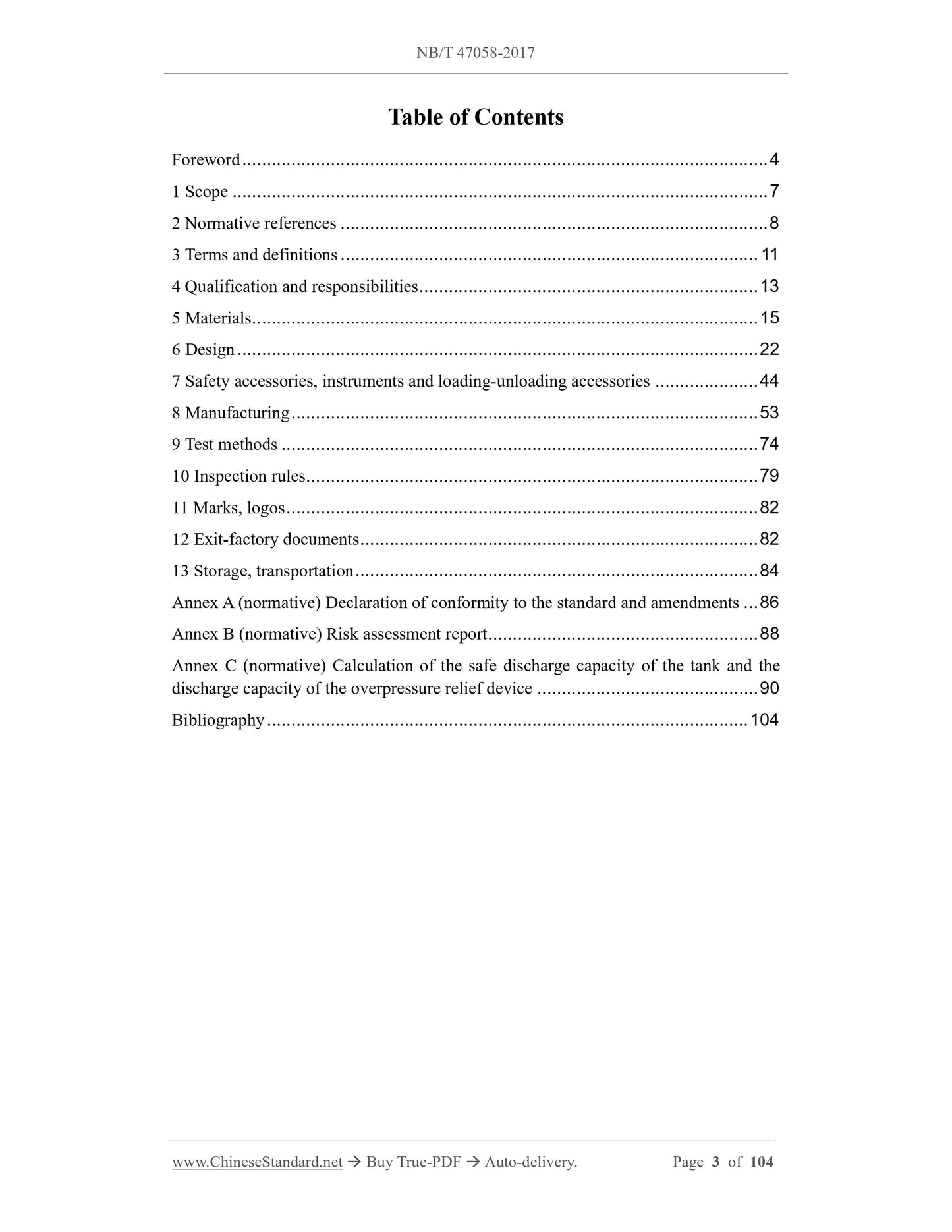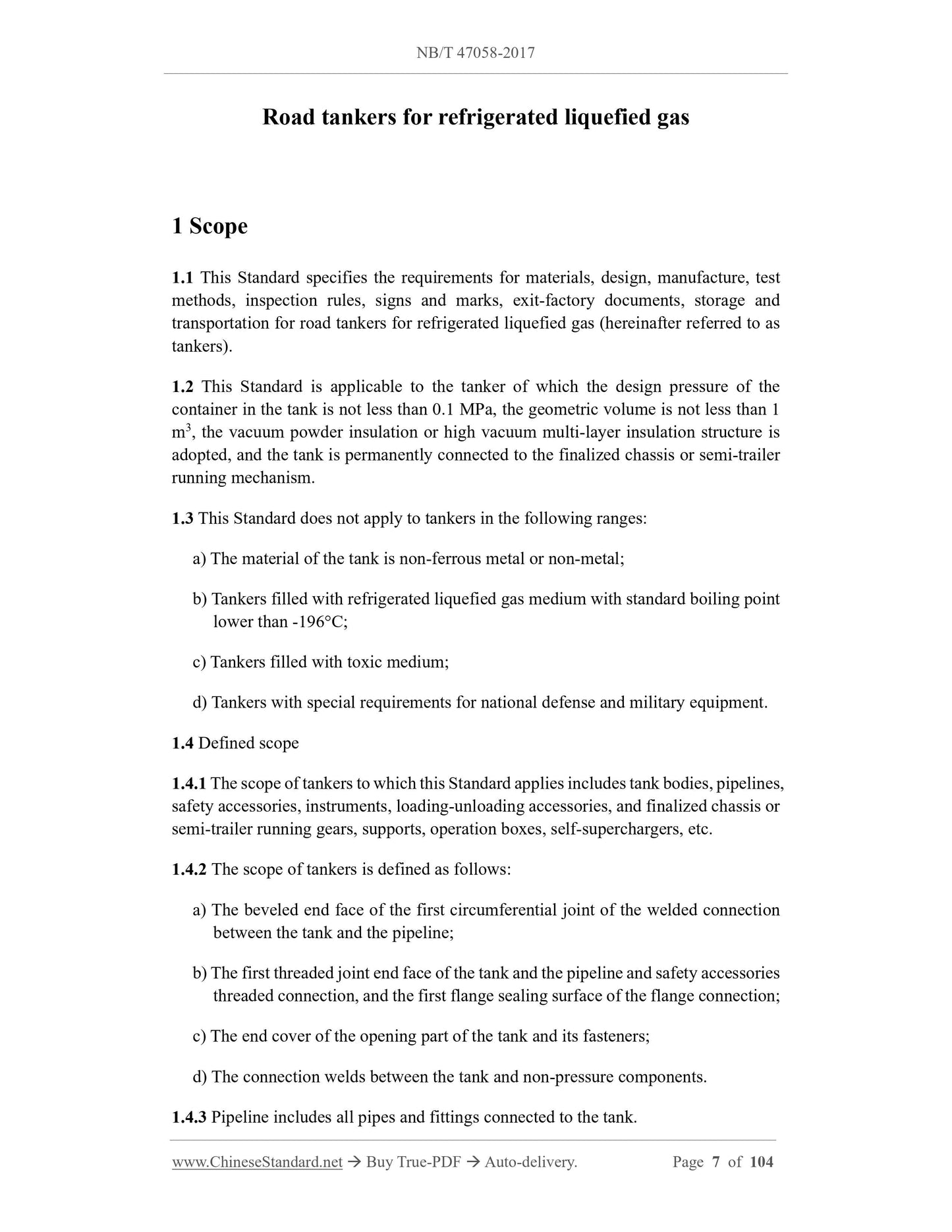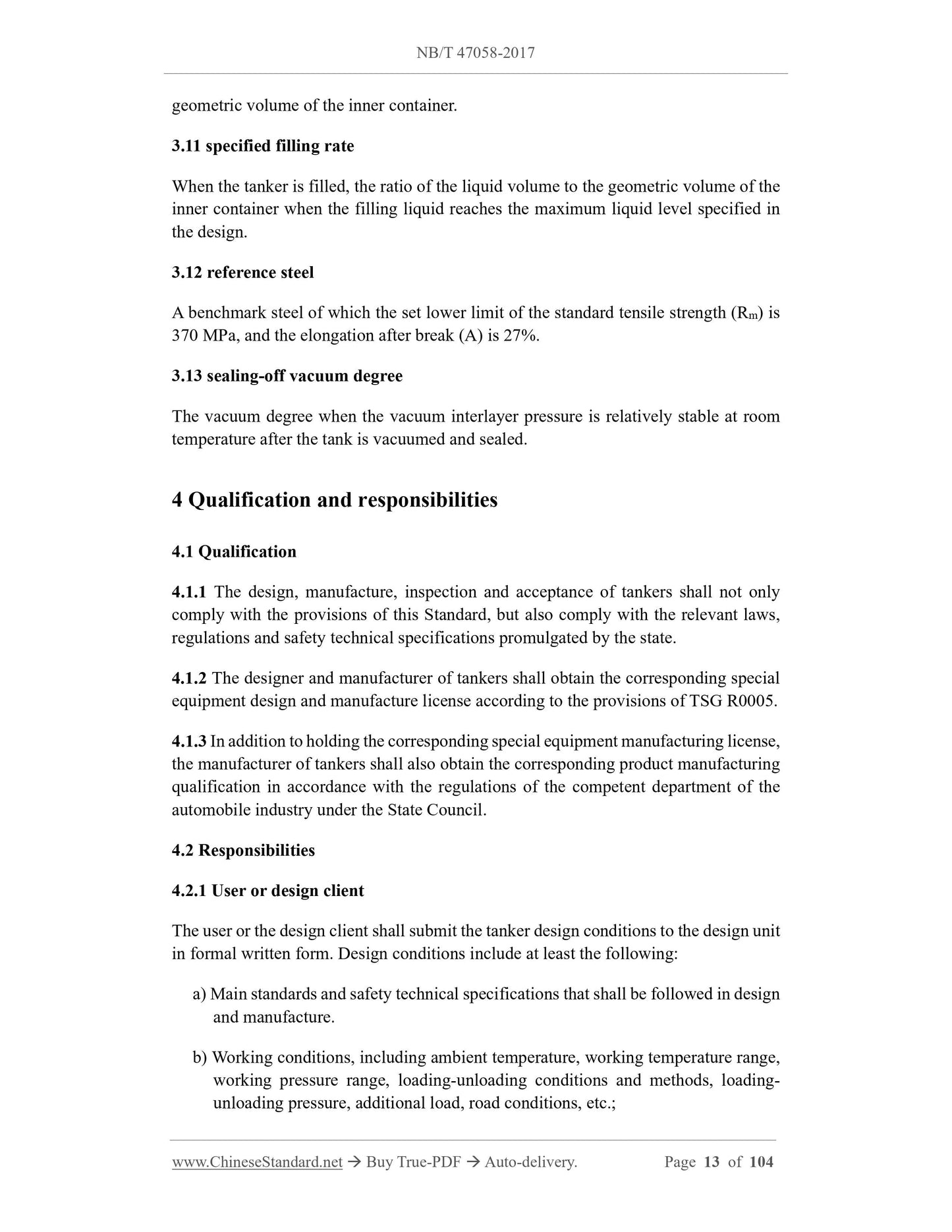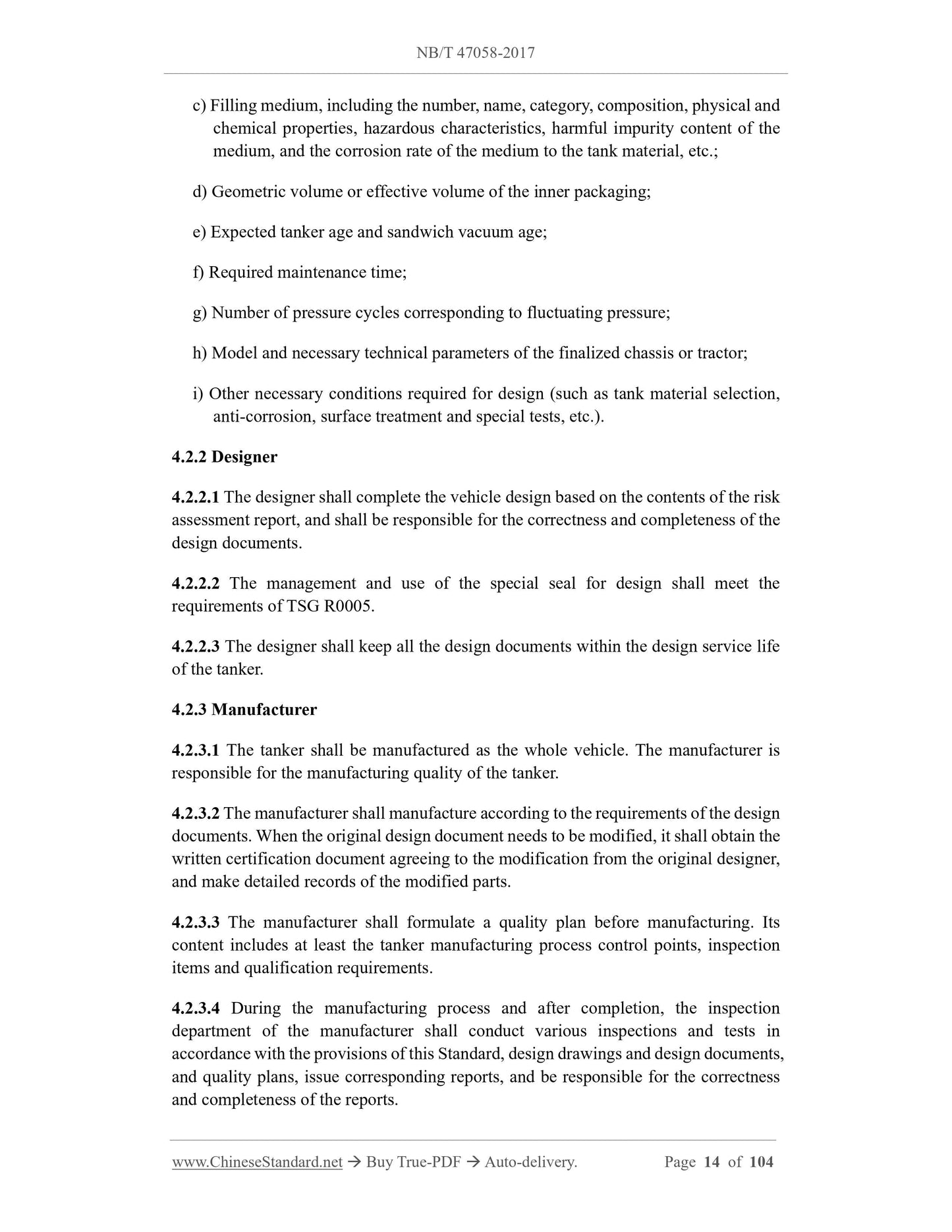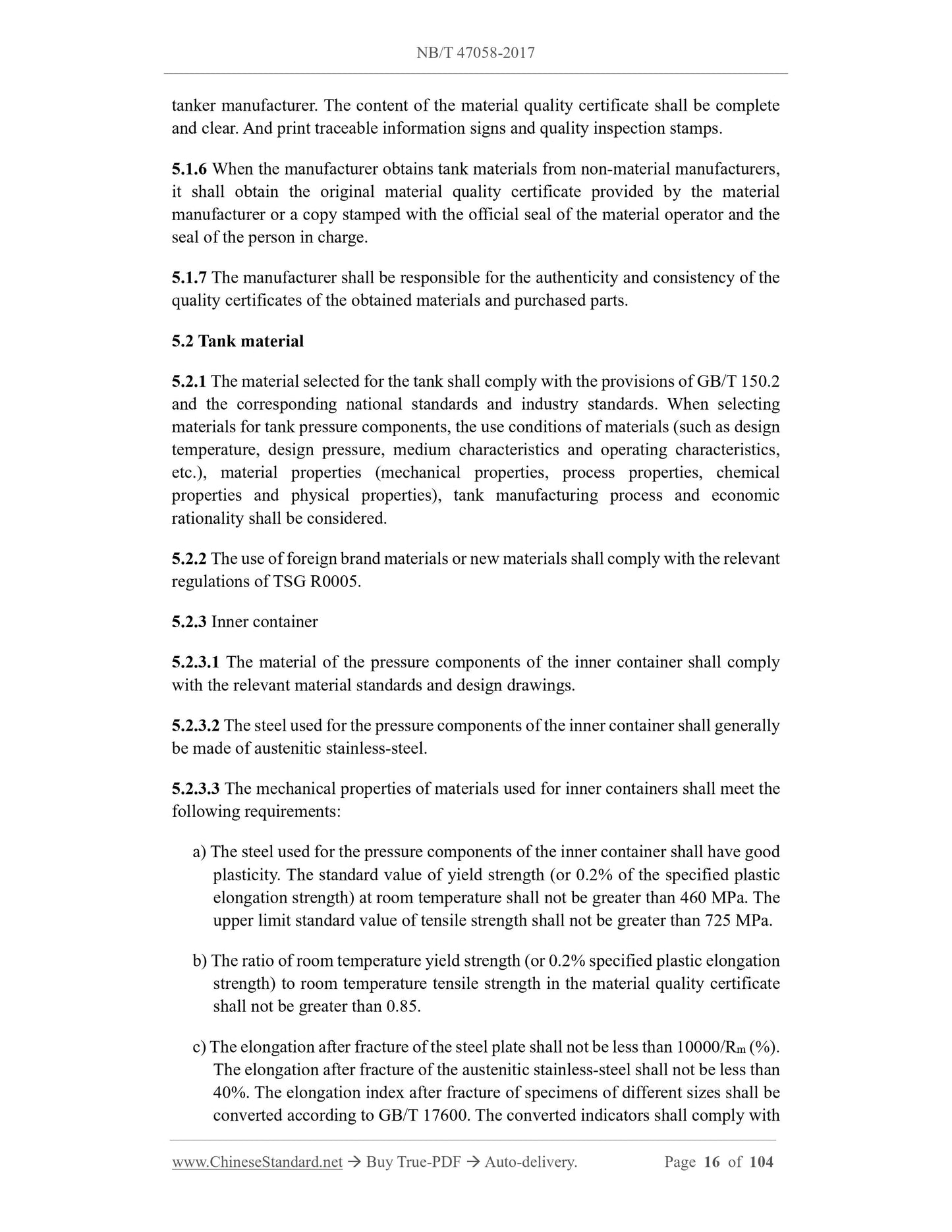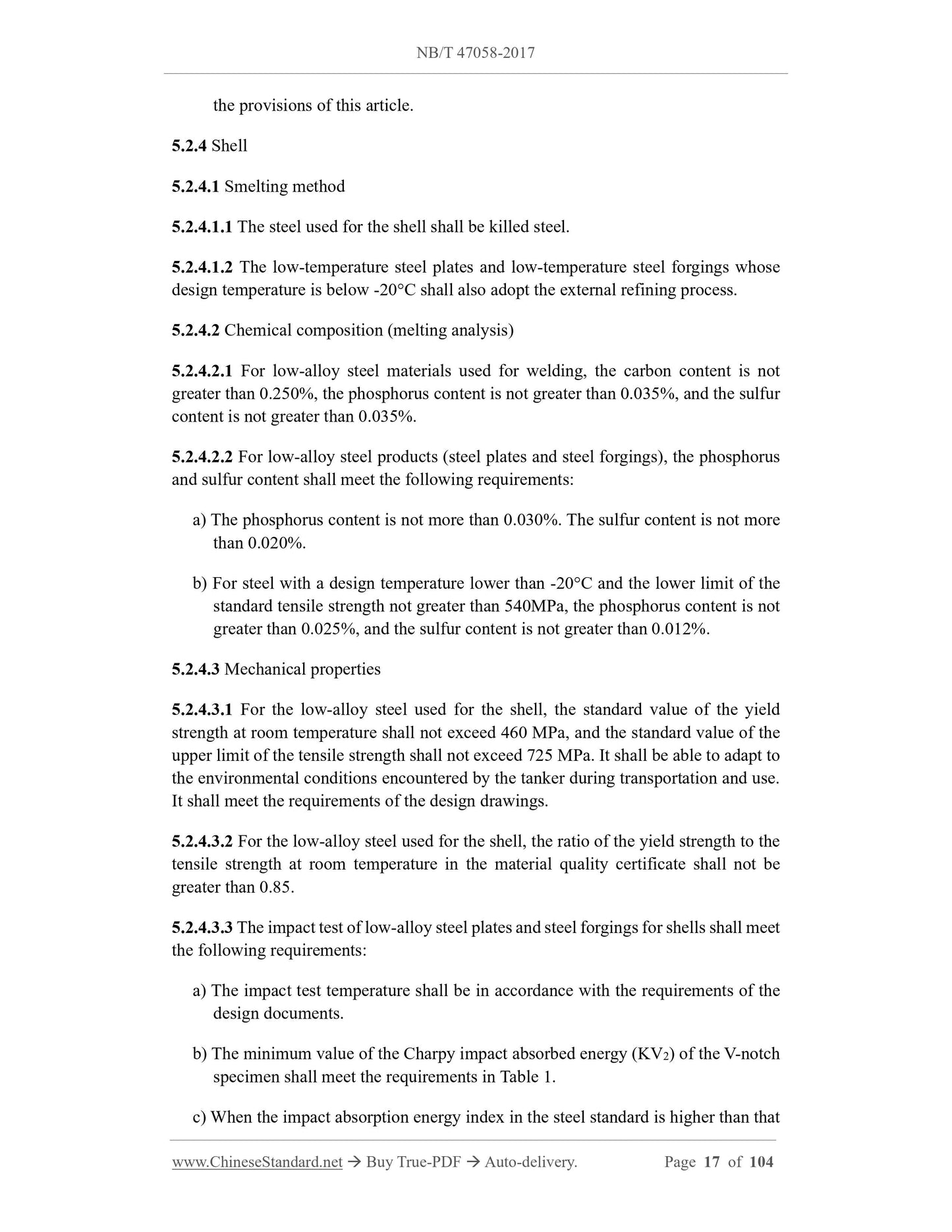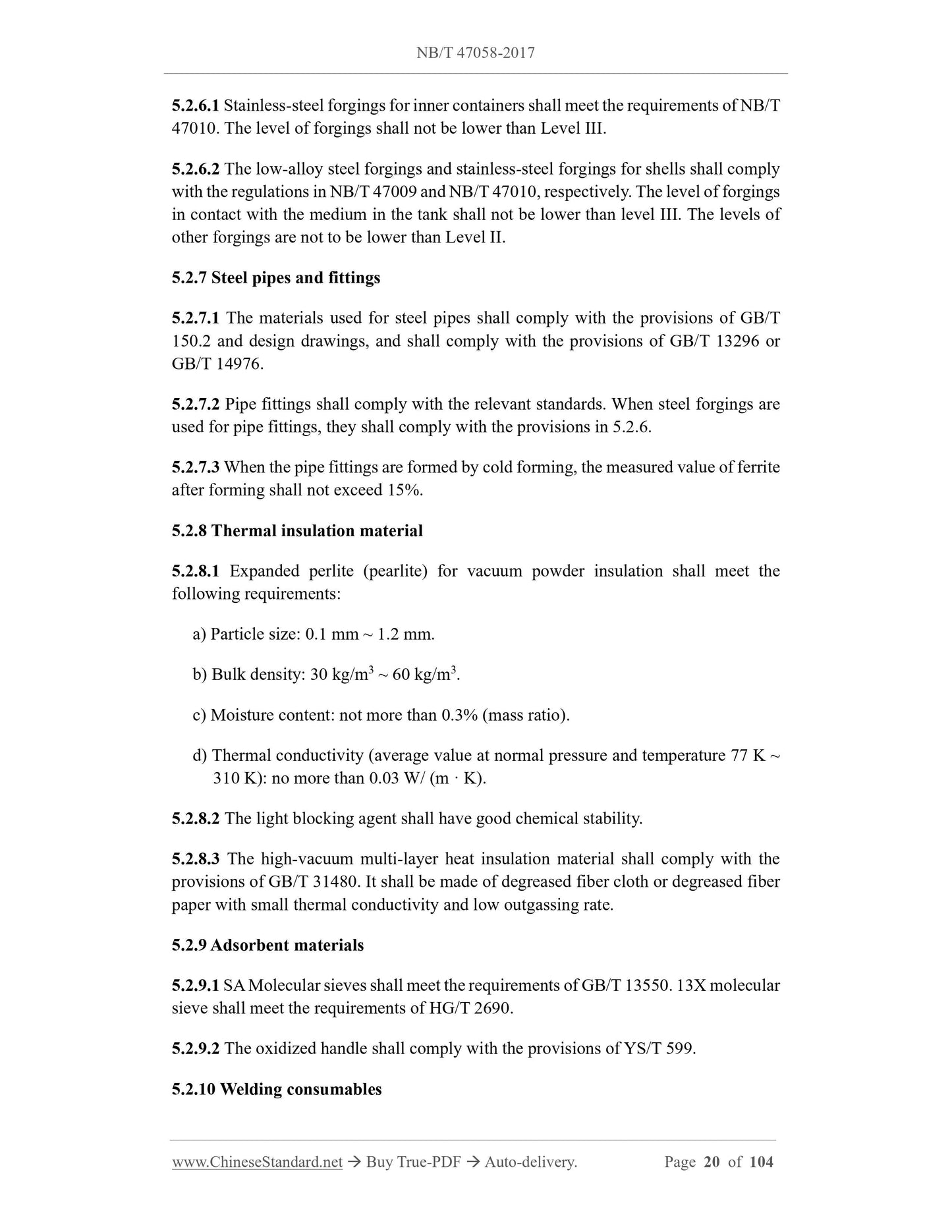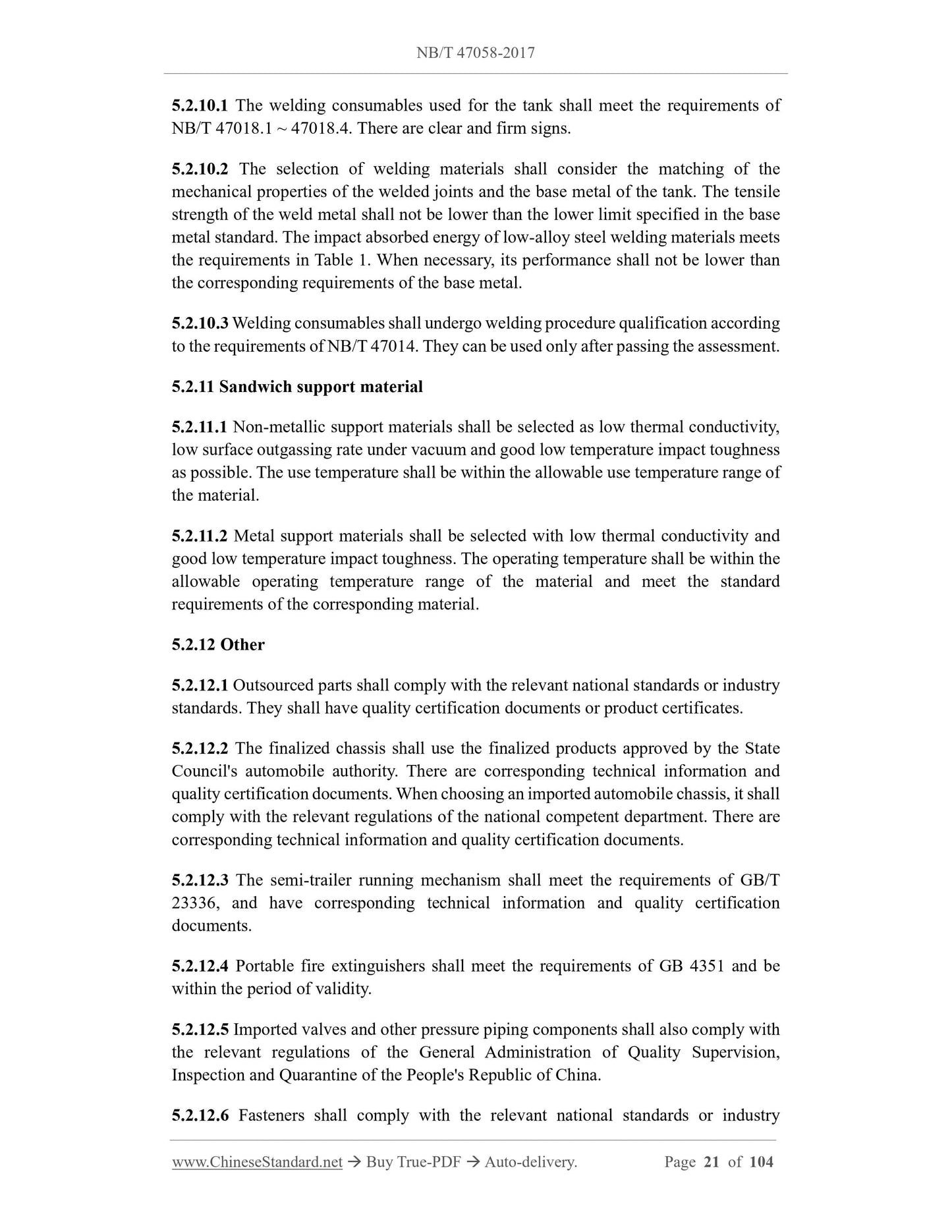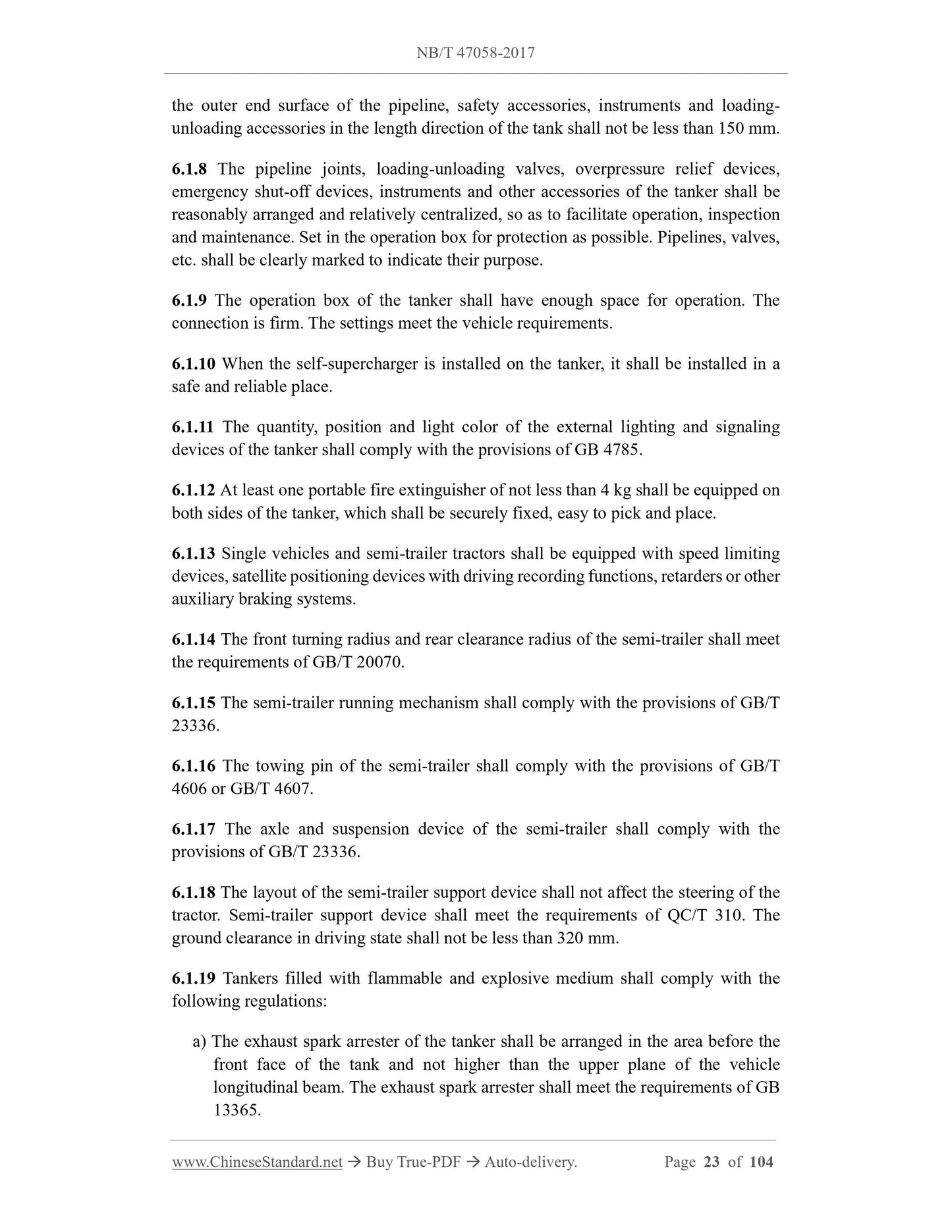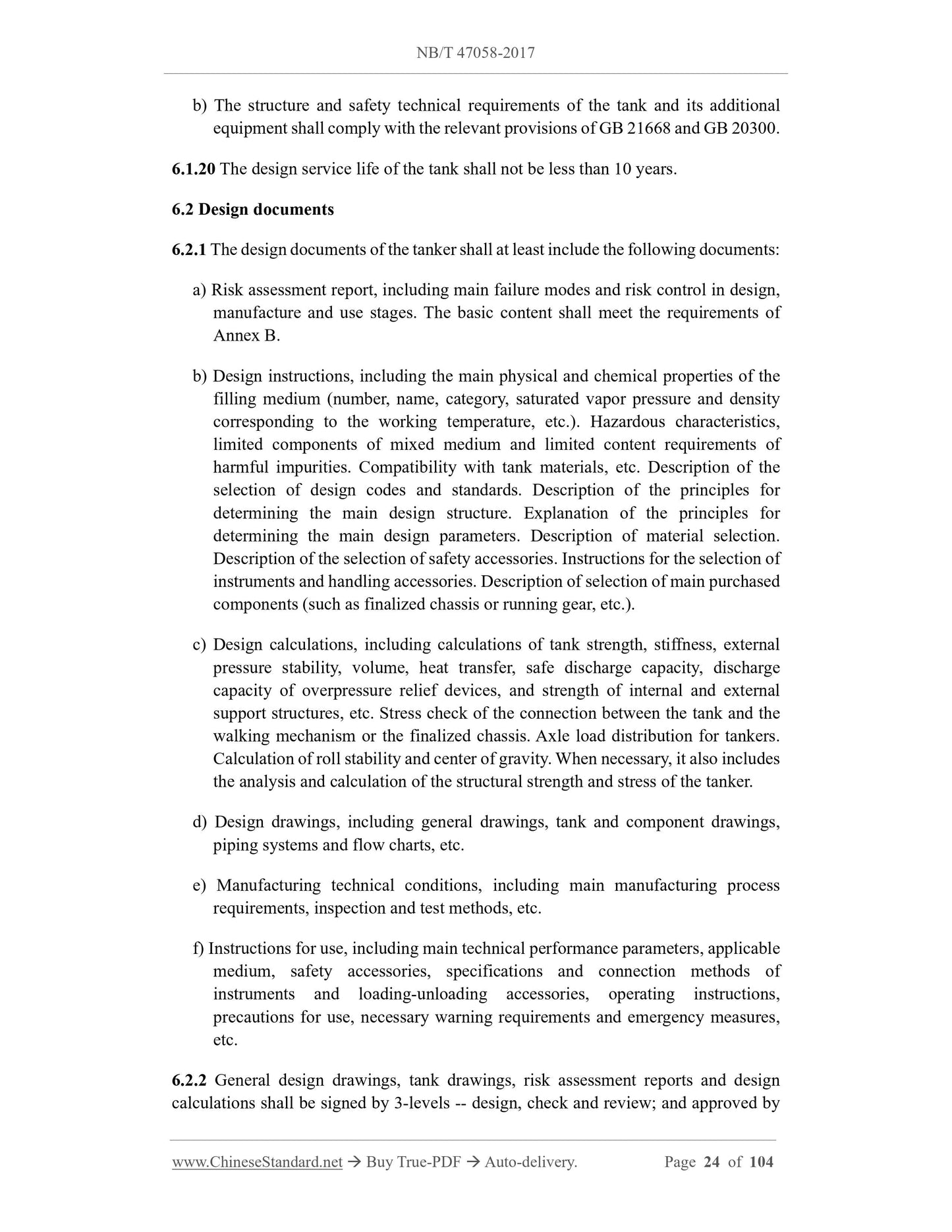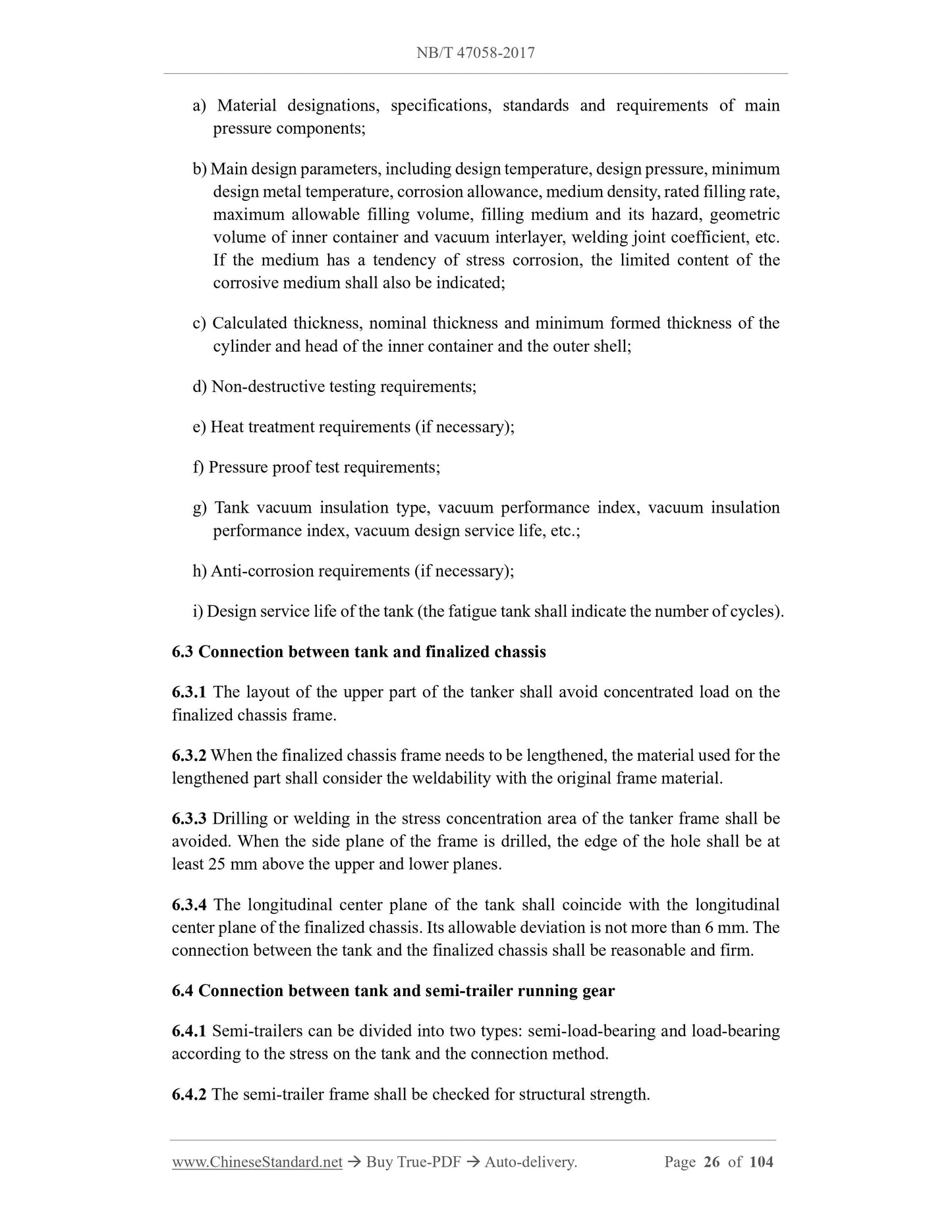1
/
of
12
www.ChineseStandard.us -- Field Test Asia Pte. Ltd.
NB/T 47058-2017 English PDF (NB/T47058-2017)
NB/T 47058-2017 English PDF (NB/T47058-2017)
Regular price
$935.00
Regular price
Sale price
$935.00
Unit price
/
per
Shipping calculated at checkout.
Couldn't load pickup availability
NB/T 47058-2017: Road tankers for refrigerated liquefied gas
Delivery: 9 seconds. Download (and Email) true-PDF + Invoice.Get Quotation: Click NB/T 47058-2017 (Self-service in 1-minute)
Newer / historical versions: NB/T 47058-2017
Preview True-PDF
Scope
1.1 This Standard specifies the requirements for materials, design, manufacture, testmethods, inspection rules, signs and marks, exit-factory documents, storage and
transportation for road tankers for refrigerated liquefied gas (hereinafter referred to as
tankers).
1.2 This Standard is applicable to the tanker of which the design pressure of the
container in the tank is not less than 0.1 MPa, the geometric volume is not less than 1
m3, the vacuum powder insulation or high vacuum multi-layer insulation structure is
adopted, and the tank is permanently connected to the finalized chassis or semi-trailer
running mechanism.
1.3 This Standard does not apply to tankers in the following ranges.
a) The material of the tank is non-ferrous metal or non-metal;
b) Tankers filled with refrigerated liquefied gas medium with standard boiling point
lower than -196°C;
c) Tankers filled with toxic medium;
d) Tankers with special requirements for national defense and military equipment.
1.4 Defined scope
1.4.1 The scope of tankers to which this Standard applies includes tank bodies, pipelines,
safety accessories, instruments, loading-unloading accessories, and finalized chassis or
semi-trailer running gears, supports, operation boxes, self-superchargers, etc.
1.4.2 The scope of tankers is defined as follows.
a) The beveled end face of the first circumferential joint of the welded connection
between the tank and the pipeline;
b) The first threaded joint end face of the tank and the pipeline and safety accessories
threaded connection, and the first flange sealing surface of the flange connection;
c) The end cover of the opening part of the tank and its fasteners;
d) The connection welds between the tank and non-pressure components.
1.4.3 Pipeline includes all pipes and fittings connected to the tank.
1.4.4 The main pressure components include the cylinder body and head of the inner
container, the pipes and pipe sockets with a nominal diameter of not less than 15 mm
in contact with the filling medium, flanges, flange covers, etc.
Basic Data
| Standard ID | NB/T 47058-2017 (NB/T47058-2017) |
| Description (Translated English) | Road tankers for refrigerated liquefied gas |
| Sector / Industry | Energy Industry Standard (Recommended) |
| Classification of Chinese Standard | T58 |
| Word Count Estimation | 70,770 |
| Date of Issue | 2017-11-15 |
| Date of Implementation | 2018-03-01 |
| Older Standard (superseded by this standard) | JB/T 4783-2007 |
| Regulation (derived from) | National Energy Board Bulletin 2017 No. 10 |
| Issuing agency(ies) | National Energy Administration |
Share
